Recognize
Domestic violence isn’t black and white. There isn’t a clear list of signs to look for.
Domestic Abuse
Even when we see domestic abuse happening, we can’t see what’s going on beneath the surface. It’s about recognizing a pattern of behaviors that doesn’t seem right, people acting different than usual, or afraid or fearful. Recognizing abuse is about checking in on our assumptions about people and their relationships, and being willing to engage when something feels off.

Domestic abuse is like an
Iceberg
People experiencing domestic abuse may seem fine on the outside, but that doesn’t mean there aren’t deeper issues beneath the surface.

DOMESTIC abuse IS LIKE AN
Invisible cage
People experiencing domestic abuse lack complete freedom, but no one around them can see the bars.

Domestic abuse is like an
Jenga tower
People experiencing domestic abuse get caught in a cycle where each move is meant to undermine and de-stabilize the other person.

Domestic Abuse is:
Domestic abuse is the act, attempt or intent of one person in an intimate, dependent, or trusting relationship to control or coerce another. This purposeful pattern of behaviour occurs over time and includes:
-
Controlling behaviours – a range of acts designed to make a person subordinate and/or dependent by isolating them from sources of support, exploiting their resources and capacities for personal gain, depriving them of the means needed for independence, resistance and escape and regulating their everyday lives.
-
Coercive behaviours – a continuing act or a pattern of acts of assault, threats, humiliation and intimidation or other abuse that is used to harm, punish, or frighten.
(Source: IMPACT Alberta)




I noticed my co-worker was taking longer lunches and was becoming less talkative during the day. Finally I just asked if everything was okay and she totally opened up.
REAL Stories >
What is
Coercive Control
Coercive control is an act, or a pattern of acts, used to regulate and dominate another person’s daily life. These acts could look like different forms of abuse, including verbal, sexual, psychological, spiritual or financial. Everyone’s experience with domestic abuse is unique, but the use of abusive behaviours are ways in which one person is trying to control or exploit another.

COERCIVE CONTROL IS
Frequent
The person in control uses repeated tactics to dominate another person.
COERCIVE CONTROL IS
Low-level
Control tactics are often subtle, quiet ways of manipulation.

COERCIVE CONTROL IS
Cumulative
These are little actions and behaviours that add up over time.
COERCIVE CONTROL IS
Not obvious
Controlling behaviour isn’t always easy to spot.
How to talk about it
Terms & language
People use many words to describe themselves and their experiences of domestic abuse. Mirror their language.
Follow the lead of the person who is sharing their experience with you. Language matters and the choice for how to identify is personal and should be respected.
Victim vs. Survivor
These are words that might be used to describe someone who is experiencing abuse. The word victim is often used to describe a person in the context of the law or in court proceedings. Survivor is a word that acknowledges that person’s trauma and helps to empower their choice to move forward from a violent relationship.
Person Experiencing / Using
Experiences of abuse do not define us. Just because someone is impacted by some form of abuse today, doesn’t mean they’ll be using or experiencing abuse in the future. Everyone has the potential to change and labels that presuppose otherwise can be harmful. First-person language reflects the idea that people are always so much more than their experiences of abuse.
